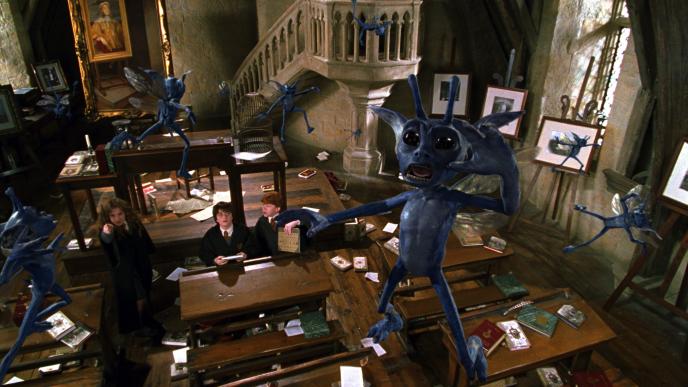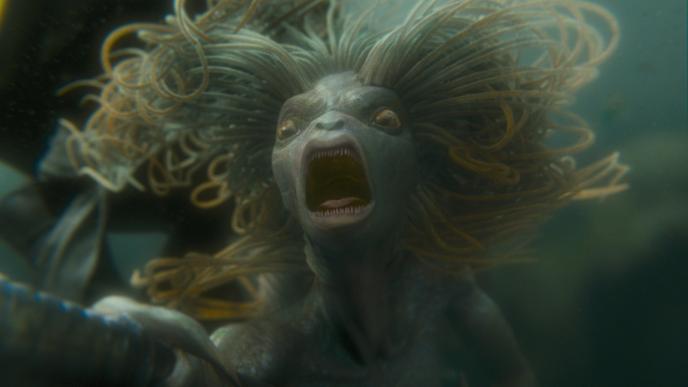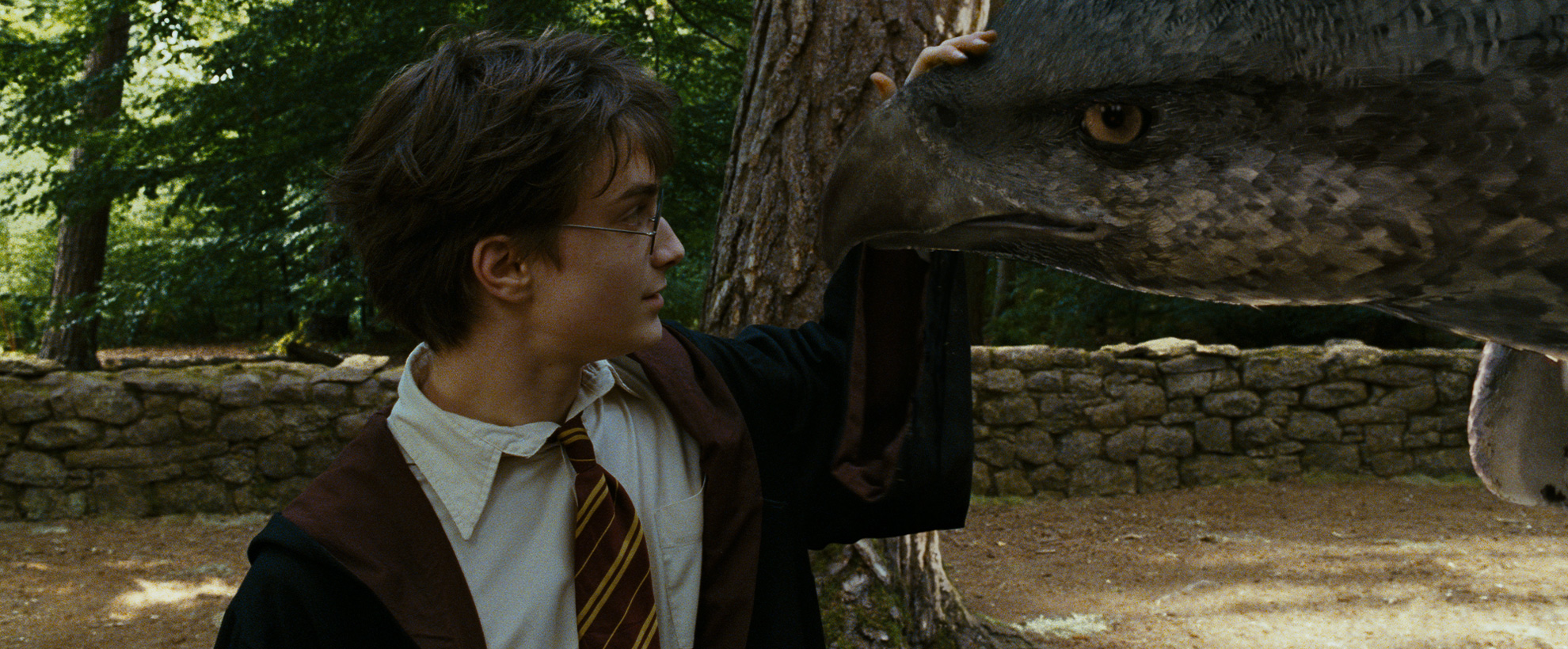
Harry Potter and the Prisoner of Azkaban
Having been involved in the first two Harry Potter movies, Framestore was only too keen take on some more challenges with Alfonso Cuarón's Harry Potter and the Prisoner of Azkaban, which opened in 2004. Pulled in to create and animate Buckbeak the Hippogriff, the most ambitious creature in the series yet, the team felt confident taking on Harry's meeting and adventures with the mythological creature with the head and wings of a bird of prey, and the body of a horse.
Conjuring Buckbeak
Buckbeak is a character in his own right, with whom Harry develops a special relationship. He's a CG creature that interacts with the actors – is, indeed, ridden by several of them – to an unprecedented extent. The production demanded the very highest standard of digital VFX, as well as some ingenius mechanical wizardry to complement the computers. A 90-strong Framestore team laboured for 15 months to deliver over 80 Hippogriff shots for Harry Potter and the Prisoner of Azkaban. The shots feature Buckbeak in a variety of scenes in both daylight and at night – wary, playful, resting, fighting and flying. The company had to be able to offer Cuarón a Hippogriff that worked as a hybrid creature, could convince in tight close-up, would take off and land believably, and was flexible enough to have changes made to the animation virtually on the spot.
There are real difficulties with creating character in a creature such as this, in the limited scenes you have available. It has to live in the space to be 'real'.
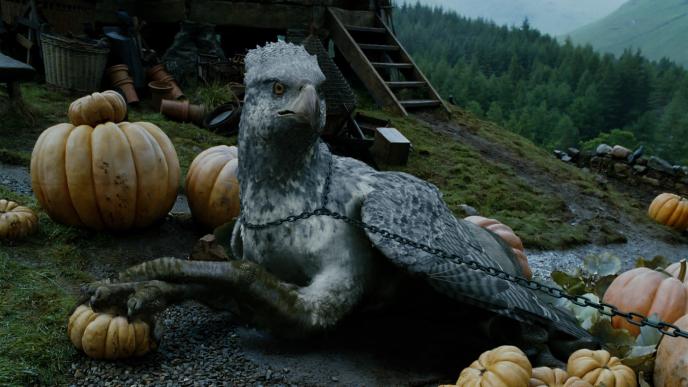
Ruffling the Feathers
One challenge was the creation of realistic feathers and fur. Buckbeak appears in tight close-up and under full daylight, and so the look and movement of the feathers had to be indistinguishable from the real thing. Detailed studies of the construction and interaction of real horsehair and feather types were undertaken to achieve the specific horse-meets-bird-of-prey look. 'A big challenge was to develop a wing that could move from fully outstretched to fully folded without interruption', says Lomax, 'The grooming and packing of the feathers have to be precisely correct'.
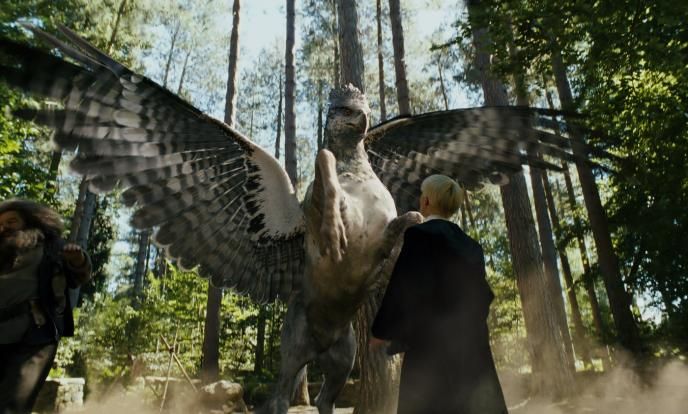
Flying High
Another headache for the team was using digital sleight of hand to reconcile the fact that, as drawn, Buckbeak's wings were 20ft long when at rest, but 28ft when the Hippogriff took to the air. The fact that the creature was a digital creation definitely gave the team an edge over the animatronic models when it came to flexibility of design and performance.

Bringing Buckbeak to Life
Animation Supervisor Michael Eames was delighted that Framestore won the prize – as he saw it – of the Hippogriff sequences. 'As well as the enormous technical challenges, here we had a creature with more to it than simple, animalistic behaviour', he recalls. 'For the animators there was a real chance – a necessity, in fact – to bring some character to Buckbeak'. Cuarón had a clear idea of both what Buckbeak was like – coltish, a little dangerous, a bit of a wild adolescent – and of the nature of his relationship with Harry, for which 'The Black Stallion' was cited as a reference point. Though accepting of Harry (and his friends), it's an animalistic acceptance, based on mutual respect. The understanding that Harry has of this is shown in a crucial sequence where Malfoy attempts his own 'bonding' with Buckbeak, and is painfully rewarded for his presumption. All of this had to be conveyed in a very short time – the tautly scripted film did not allow for a leisurely exposition of the boy/bird friendship. 'There are real difficulties with creating character in a creature such as this, in the limited scenes you have available', says Eames. 'It has to live in the space – to be 'real', it doesn't talk, and it has a beak – with all the lack of expression implicit in that. So you look for everything that can help you convey what you want. We used cues from the actors, interaction points. For example, when Harry and Buckbeak first meet, we used a slight slip in Harry's posture, bouncing it off Buckbeak as a reaction'.
Taming the Beast
Another proprietary tool used by the Framestore team for the equestrian flying sequences was the M-Rig. A sort of digitally controlled mechanical 'bull', the M-Rig enables animation information to be fed into the animatronic model on which actors are seated and filmed in front of a blue screen, so that the model responds to the animations that have been planned and created.
That the team succeeded in bringing Buckbeak to the big screen is not in question. That they did it so beautifully, imbuing the Hippogriff with both the wildness and the regal presence you'd expect in such a beast, is a tribute to the artistry and talents of the Framestore team.


